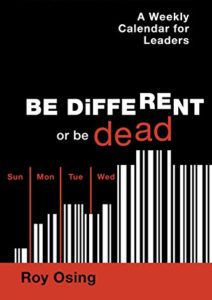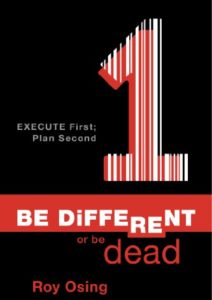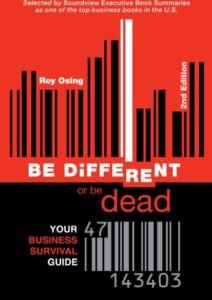The “long dollar” is the most valuable prize coveted by sales; it’s a dollar that keeps on giving to the salesperson.
The long dollar represents repeated customer spending over many months and years as opposed to the short dollar which is spent in the short term.
Long dollars are generated by loyal customers who have committed themselves to an organization; short dollars follow the intermittent purchase of a product or service that satisfies an immediate need which is often impulse driven.
Prospecting for the long dollar requires a commitment to relationship building on the part of the salesperson; they are produced only if sales “puts in the time”.
The long dollar is the ultimate return on sales investment of time and intensive emotional energy required to build a deep and intimate understanding of what value the customer expects.
Short dollars come when sales investment falls short; mutual respect and trust is only skin deep.
Here are a few quick hits to guide you in your quest for the elusive long dollar.
Stratify your account base
Identify those clients who have demonstrated the willingness to repeatedly spend with you over a long period of time. Don’t fuss with the group who tend to shop around for the best deal; who use a competitive bid process to focus on the lowest price offer. The end objective is to have a target client group who are all prepared to return your investment of time and money with an ongoing revenue stream.
Prioritize your client list
Rank order clients according to their 5-year revenue potential given their past loyalty to your organization; avoid those who have spent with you in the past but who represent a relatively small sales opportunity in dollar terms.
The group you want to explore for the long dollar is both loyal and has massive sales opportunity over the 3-5 year time period.
Review the client list for 5-year potential annually
Once you have started to mine the list for sales, stay alert for any changing circumstances with individual clients. You want to be able to spot a new opportunity that suddenly presents itself and dump a client that suddenly has a downturn and no longer shows a healthy opportunity. Clients that don’t live up to your expectations must be relegated from your list.
Build a relationship-building plan
As every client is unique, building strong relationships with each of them requires a different approach. Take the time to create a one-pager on each client that captures the main actions you intend to take to strengthen your bond with them. Then double check to make sure they address the special circumstances of each. Employ common tactics where it makes sense, but in general avoid applying a one-size-fits-all process.
Revise your actions on the run
Action plans rarely yield the results that were originally intended. The client’s needs change, new competitors enter the fray, regulations change and the environment generally that was in play when you originally developed your relationship building tactics took a right angled turn and rendered your plan irrelevant.
Be prepared to not only spot changes in real time, but also to act on what you learn as soon as you spot a tipping point.
Capturing the illusive long dollar is the end game of every successful salesperson but it doesn’t come easily and with a half hearted effort.
It requires discipline, tenacity and perseverance to earn but is well worth the journey.
Pipeliner CRM empowers sales teams to win that long dollar prize.Get your free trial of Pipeliner CRM now.

















Comments